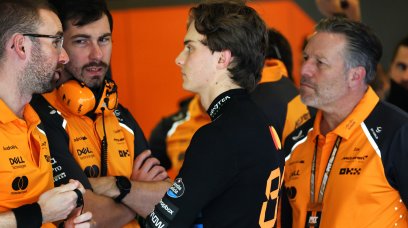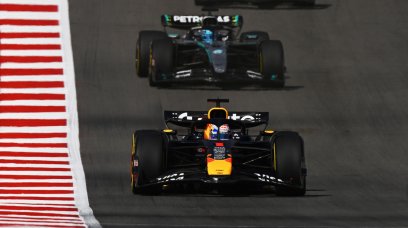To understand the extent of the mission accomplished by Ferrari winning the 24 Hours of Le Mans on its debut, it is necessary to evaluate how much the Sarthe Classic affects the preparation of the entire WEC season in terms of economic, human, and planning resources. It is estimated that about fifty percent of the entire budget is in fact directly or indirectly linked to this tender is not an exaggeration. It should therefore come as no surprise to state that the 499P was conceived with the 24 Hours of Le Mans in mind. Indeed, the very foundations of this project were built based on the "needs" of the Sarthe marathon. Equally, a peculiar feature of the 499P since its conception, within the limits of the Hyper Car technical regulations, has been the extremes of each of its components, with the aim of extracting the maximum possible performance from it.
Paradoxically, it is like Ferrari was almost following the same F1 design paradigm, where first it is crucial to find performance and reliability second. That "almost" takes on a particular meaning in the engineering of this car. Leaning on their experience gained with F1 hybrid systems, each component of the ERS was designed and built by Ferrari. Importantly, all the installation inside the 499P has been carefully studied in such a way as to be protected as much as possible from harmful vibrations and excessive heat, despite the extremely compact packaging of the engine and its accessories. The less fortunate of the two 499Ps, number 50, was forced to a prolonged stop during the night only due to a problem with the ERS radiator, which was hit by a piece of debris (stone). Therefore its issue was caused by external factors, and not by the reliability of the system, which underlined the performance extracted by the Ferrari team. On the other hand, it is true that on the winning car, it was necessary to completely reset the electrical system twice in order to restart the car after the pit stop. The first instance was around the 19th hour, and the second time was around 20 minutes before the end of the race. In both situations, a standard recovery procedure was performed which effectively reset the 'shut-down' that had been activated to protect the hybrid system. These two incidents have in fact highlighted the robustness of the emergency procedures, demonstrating that not only the hardware part of the car, but also all of the software has been designed with great accuracy, capable of withstanding prolonged stresses of this race. This has made reliable tools available to both drivers and engineers that have put them in a position to deal with every contingent problem rationally and maintaining coolness, two crucial factors for optimising the timing of each unscheduled intervention.
Speaking specifically of the 499P's behaviour on the track, the effectiveness of the vehicle dynamics that characterise it cannot be overlooked. It is in fact clear that it was the vehicle dynamics of this car that has made it possible to brilliantly manage tyre degradation, which boosted their challenge to their rivals, including Toyota. At the start of the championship in Sebring, Ferrari had the opposite problem, but in the next two races, the engineers actually found an increasingly precise balance for the set-up, thanks to the analysis of the data collected on the track. Not only was the analysis of the mechanical setup carried out, but the aerodynamic one was integrated. A crucial role in the fine tuning of the set-up was decidedly played by the push-rod suspension, which optimally combined cornering stability, ride heights management and longitudinal oscillations control which, as known, significantly influence the effectiveness and efficiency of the lower aerodynamics. In fact, it is no coincidence that both 499P cars presented an extremely low-angle rear wing at Le Mans, being able to rely on the downforce generated by the floor. The maximum speed figures points to further confirmation of the aerodynamic performance of this car. As known, it does not constitute a factor that autonomously indicates the overall performance of a racing car, but when combined with the performance in a variety of corners and controlled tyre degradation, it brings out the aerodynamic efficiency combined with the performance of the hybrid engine. In short, if in the first rounds of the season the 499P had shown convincing pace, demonstrating in qualifying that it did not fear the Toyotas, then in the hundredth anniversary race of Le Mans it perhaps proved to be a less immature project than one might think. Ferrari is back, annihilating rivals such as Peugeot and Porsche and interrupting Toyota's dominance... not a bad business card for a rookie!
Ferrari 499P Highlights
Front bodywork and air intake The front section is characterised by a large sinuous spoiler which channels the air flow directed to the floor and to the cooling of the ERS, located on the front axle, into the horizontal air intake under the nose. The load generated by the downforce is considerable. Side bodywork and rear ducts Behind the huge rounded front wheel fender, the sidepods sport a low straight profile that ends before the big rear wheel fender (see also image below). Air scoop The air intake located above the roof is divided into three ducts. Note the vertical flow diverters to channel the air flow towards the air scoop. One of these, in the first phase of the race, had partially detached and obstructed the air inlets. Rear wing The interesting lower profile of the rear wing that has the function of increasing the extraction of air from the floor. It works like the beam wing on Formula 1 cars.
Most read








